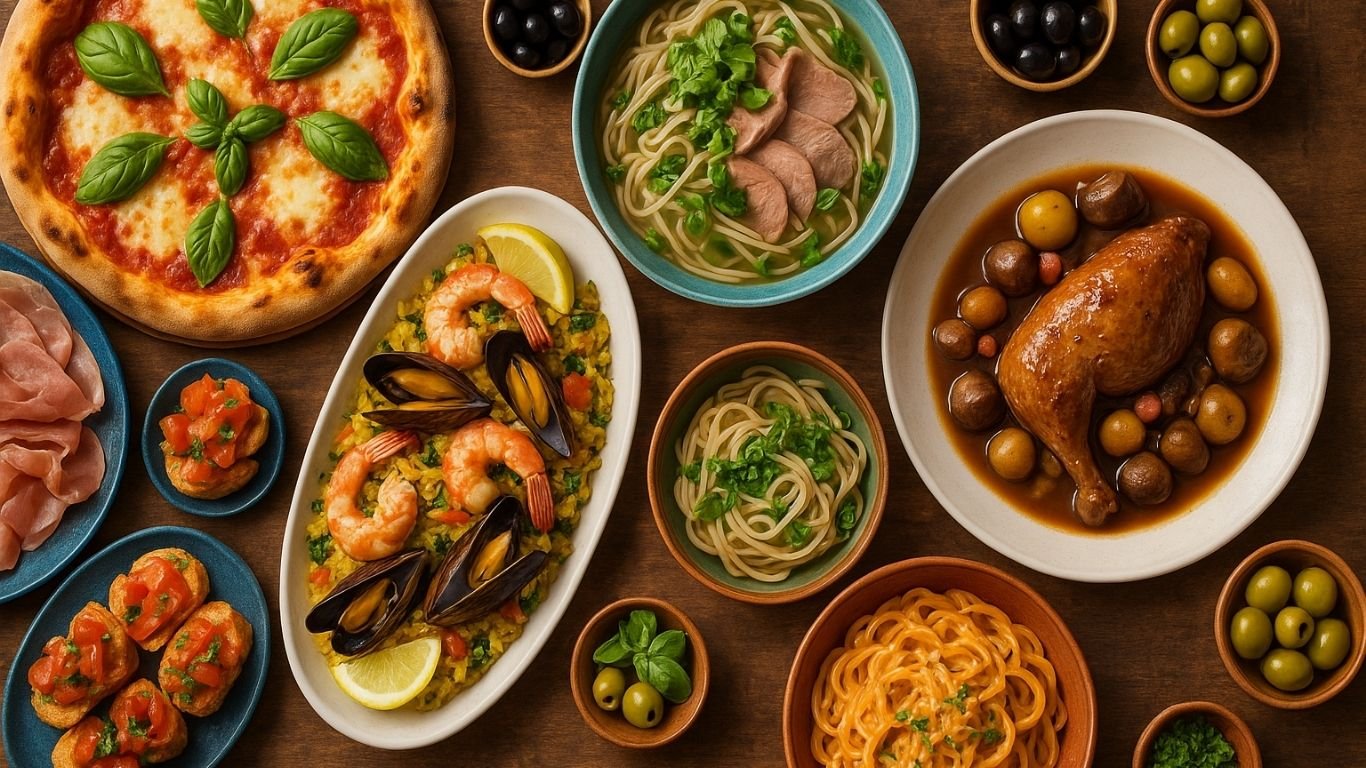Europe is a continent rich with history, culture, and perhaps most enticingly—food. From the vibrant tapas bars of Barcelona to the elegant patisseries of Paris, Europe’s culinary landscape is as diverse as it is delicious. This guide will escort you through the streets and flavors of Europe’s finest food capitals, immersing you in an exquisite journey of culinary discovery.
Table of Contents
Defining a Culinary Capital
A culinary capital isn’t simply a city with great food; it’s a destination where gastronomy deeply intertwines with culture, tradition, and innovation. It is where the food tells a story—reflecting history, geography, and societal evolution. Culinary capitals are marked by their unique dishes, celebrated chefs, vibrant markets, and dining experiences that draw food lovers from around the globe.
Why Europe Stands Out in the Food World
Europe boasts an unparalleled culinary heritage that spans centuries, shaped by diverse climates, geography, and cultural exchanges. Each European nation brings distinct traditions, techniques, and flavors, establishing Europe as a gastronomic powerhouse. European cities frequently dominate Michelin-star rankings and global food awards, highlighting their continued culinary relevance and innovation.
What This Guide Offers
In this guide, we journey through Europe’s iconic culinary capitals, each renowned for its distinct gastronomic identity. You will discover authentic dishes, recommended restaurants, bustling markets, and culinary activities that provide actionable insights for your travels. Whether you seek street food, fine dining, or a hands-on cooking experience, this comprehensive guide equips you with all you need to savor Europe at its most delicious.

Paris, France: The Epitome of Fine Dining
Classic French Cuisine and Iconic Dishes
Paris remains the pinnacle of culinary excellence, famed worldwide for classic dishes like Coq au Vin, Bouillabaisse, and Escargots de Bourgogne. French cuisine is renowned for its sophisticated techniques, rich sauces, and meticulous attention to detail. Every plate embodies history and elegance, reflecting France’s profound culinary tradition.
Michelin-Starred Restaurants and Bistros
Paris boasts numerous Michelin-starred establishments, including iconic spots such as Alain Ducasse au Plaza Athénée, Arpège, and Le Meurice. Yet, the city’s true charm often lies in its intimate bistros, where you can indulge in timeless dishes amidst authentic Parisian ambiance. Bistro Paul Bert and Chez Dumonet are celebrated local favorites offering genuine culinary experiences.
Culinary Experiences: Markets, Bakeries, and Wine
Exploring Parisian food markets like Marché Bastille or Rue Mouffetard is essential for food enthusiasts. These markets offer an abundance of fresh produce, cheeses, and artisanal products. Additionally, Parisian bakeries like Poilâne and Ladurée provide delightful pastries and breads, making a simple stroll an indulgent experience. Complement your culinary adventure with exquisite French wines, from Burgundy’s elegant Pinot Noirs to Bordeaux’s robust reds, enhancing every gastronomic experience.

Athens, Greece: Timeless Mediterranean Flavors
Iconic Greek Dishes and Local Specialties
Athens presents a culinary journey rooted deeply in Mediterranean traditions. Savor dishes like moussaka, grilled souvlaki, fresh Greek salads, and spanakopita—each highlighting locally sourced ingredients like olives, feta cheese, and olive oil. Authentic tavernas such as Ta Karamanlidika tou Fani and Strofi offer genuine Greek dining experiences.
Bustling Markets and Street Eats
Explore Athens’ vibrant markets, including Varvakios Agora, the central food market buzzing with fresh seafood, spices, and produce. Street food enthusiasts should try koulouri (sesame bread rings), souvlaki wraps, and loukoumades (fried dough balls drizzled with honey), found in stalls and food trucks throughout the city.
Greek Wines and Gastronomic Tours
Athens serves as a gateway to Greece’s renowned wine regions, including Attica and Peloponnese. Local wine bars like Oinoscent offer curated tasting experiences, showcasing Greece’s diverse grape varieties. Culinary tours often combine historic sites with local food tastings, providing enriching cultural and gastronomic insights.

Rome, Italy: A Taste of Authentic Italian Flavors
Exploring Roman Pasta Dishes and Pizza
Rome’s culinary tradition thrives on simplicity and high-quality ingredients. Iconic pasta dishes like Carbonara, Cacio e Pepe, and Amatriciana encapsulate the essence of Roman cuisine—rich, flavorful, yet uncomplicated. Equally famed is Roman pizza, distinctively thin, crispy, and traditionally baked in wood-fired ovens, exemplified at renowned spots such as Pizzeria da Baffetto and Pizzarium.
Trattorias and Food Markets
Roman trattorias offer the most authentic dining experiences, showcasing traditional recipes passed down through generations. Popular establishments like Trattoria Pennestri and Roscioli serve dishes prepared with locally sourced ingredients, embodying the heart of Roman cuisine. Don’t miss exploring Campo de’ Fiori, a bustling market brimming with fresh vegetables, artisanal cheeses, and spices, providing an immersive culinary exploration.
Gelato and Coffee Culture
Rome’s culinary journey wouldn’t be complete without indulging in gelato. Visit famous gelaterias like Giolitti or Gelateria del Teatro for rich, creamy flavors crafted from natural ingredients. Complement your culinary exploration with Rome’s vibrant coffee culture, where cafes like Sant’Eustachio and Tazza d’Oro offer exceptional espresso experiences, deeply rooted in Roman daily life.
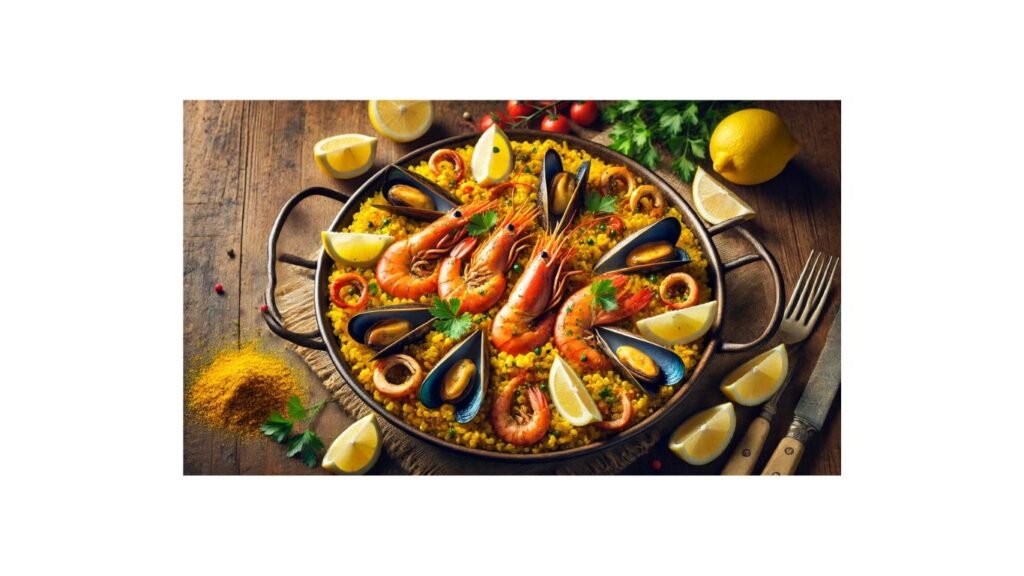
Barcelona, Spain: A Tapas and Seafood Paradise
The Boqueria Market and Local Produce
Barcelona’s culinary reputation begins at La Boqueria Market, an iconic destination teeming with fresh seafood, vibrant produce, and enticing street food stalls. A visit here provides not just ingredients but also a snapshot of Catalan culture and its culinary soul.
Tapas Bars and Modern Catalan Cuisine
Barcelona excels in tapas culture, from traditional spots like Quimet & Quimet to innovative eateries like Tickets. Each tapas bar offers a different culinary perspective, blending tradition and innovation through small plates that showcase the city’s culinary creativity.
Seafood Specialties and Paella
Barcelona’s coastal location makes it a paradise for seafood enthusiasts. Classic dishes like paella and seafood fideuà are must-tries, often enjoyed best at seaside restaurants like Can Majó or La Mar Salada, where freshness meets culinary artistry.
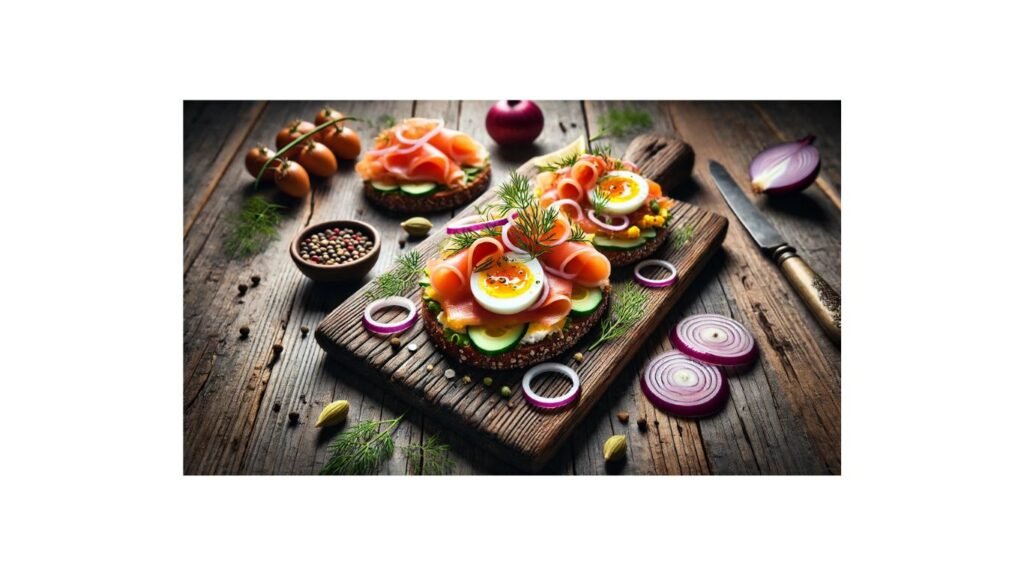
Copenhagen, Denmark: New Nordic Cuisine and Innovation
The Rise of New Nordic Cuisine
Copenhagen is celebrated worldwide for pioneering New Nordic Cuisine, emphasizing seasonal, local ingredients, sustainability, and innovative techniques. Led by culinary visionaries like René Redzepi at Noma, this movement has transformed Denmark into a global gastronomic hub. Restaurants such as Geranium and Amass also exemplify this innovative approach, combining nature’s bounty with artistic presentation.
Michelin-Starred Nordic Restaurants
Copenhagen houses an impressive array of Michelin-starred restaurants. Noma, renowned globally, has consistently ranked among the world’s best, renowned for its groundbreaking dishes that push culinary boundaries. Geranium, another three-star establishment, offers an exquisite menu highlighting seasonal Danish produce presented in an artistic and sophisticated manner.
Street Food and Local Delicacies
Beyond fine dining, Copenhagen’s culinary scene thrives in its vibrant street food culture. Reffen, a bustling street food market, is a must-visit, offering a variety of international and local dishes prepared sustainably. Traditional Danish delicacies such as smørrebrød—open-faced sandwiches topped with fresh, local ingredients—can be enjoyed at casual eateries like Aamanns or Torvehallerne market, providing authentic taste experiences.
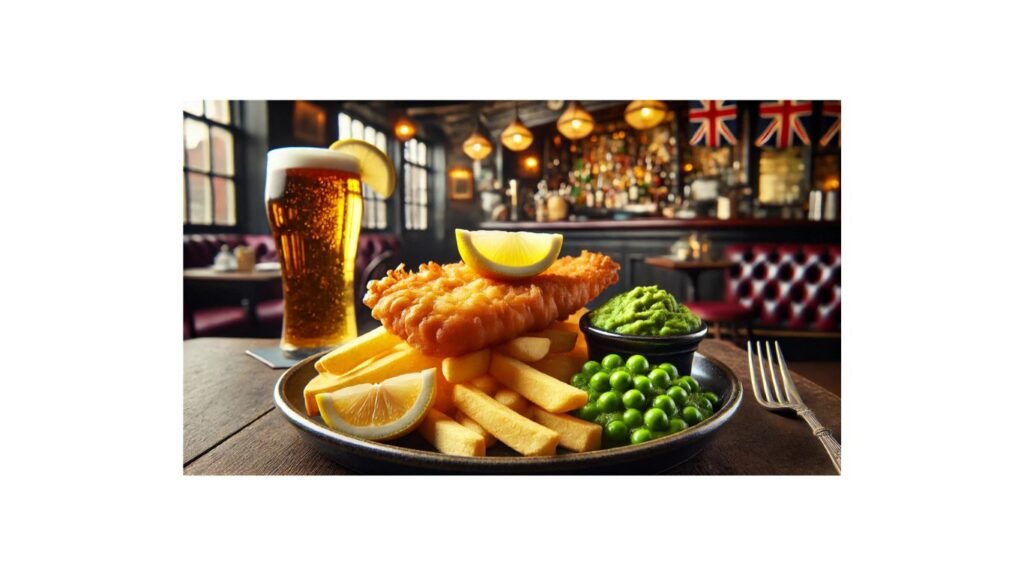
London, England: A Melting Pot of Global Flavors
Traditional British Fare and Pub Culture
London combines traditional British cuisine and vibrant pub culture, featuring dishes such as fish and chips, Sunday roast, and hearty pies. Classic pubs like The Churchill Arms or Ye Olde Cheshire Cheese offer authentic settings to experience British culinary traditions.
Diverse Culinary Districts and Markets
London’s food scene mirrors its multicultural population. Borough Market and Camden Market are prime examples, offering everything from gourmet cheeses and fresh produce to international street foods. Neighborhoods like Brick Lane and Chinatown further showcase London’s global culinary influences.
High Tea and Fine Dining Experiences
London is famed for its luxurious high tea experiences at venues such as The Ritz or Claridge’s. Additionally, acclaimed restaurants like Gordon Ramsay’s flagship and Dinner by Heston Blumenthal elevate London’s fine dining scene.

Lisbon, Portugal: Coastal Flavors and Pastry Delights
Fresh Seafood and Grilled Sardines
Lisbon’s coastal position makes seafood integral to its cuisine. Signature dishes like grilled sardines and seafood rice are staples, best enjoyed at traditional eateries along the Alfama district or near the waterfront.
Pastel de Nata and Local Bakeries
The iconic pastel de nata, Lisbon’s creamy egg tart pastry, is a must-try. Visit historic bakeries such as Pastéis de Belém or Manteigaria to experience the authentic flavors that define Lisbon’s pastry heritage.
Wine and Port Experiences
Lisbon provides excellent access to Portuguese wines, particularly Port from the Douro Valley. Wine bars and tastings throughout the city offer immersive experiences, with establishments like BA Wine Bar or By The Wine leading the way.
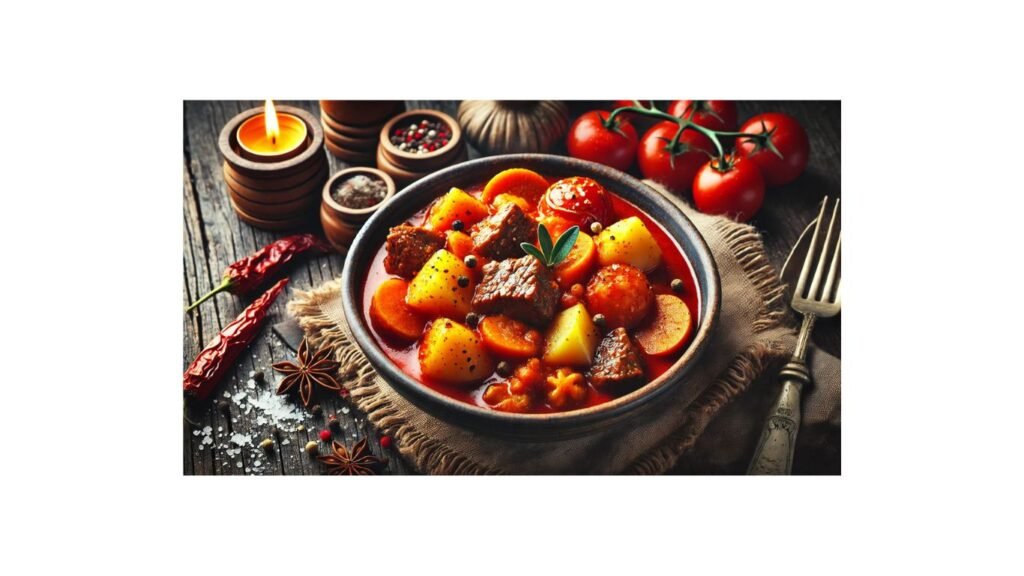
Budapest, Hungary: Hearty Central European Cuisine
Goulash and Traditional Hungarian Dishes
Budapest is famed for its rich and comforting cuisine, anchored by traditional dishes such as goulash, a hearty stew of beef, vegetables, and paprika. Other iconic dishes include chicken paprikash, stuffed cabbage, and lángos—a deep-fried dough topped with sour cream, garlic, and cheese. Authentic restaurants like Gundel and Hungarikum Bisztró offer these culinary delights in welcoming environments.
Markets and Street Food
A visit to Budapest would be incomplete without exploring its vibrant food markets, especially the Great Market Hall (Nagy Vásárcsarnok). Here you can find fresh produce, Hungarian spices, and traditional sausages. The city’s street food scene is also thriving, with food trucks and stalls serving everything from chimney cakes (kürtőskalács) to innovative takes on classic dishes.
Wine Regions and Culinary Tours
Hungary boasts renowned wine regions like Tokaj and Eger, celebrated globally for their distinctive wines, including the sweet Tokaji Aszú. Budapest provides an ideal starting point for wine-tasting tours, offering guided excursions to vineyards and cellars where visitors can sample exquisite local wines paired perfectly with Hungarian cuisine.
Conclusion: Celebrating Europe’s Culinary Richness
Europe’s culinary capitals offer an extraordinary blend of tradition, creativity, and flavor. From the sophisticated cuisine of Paris to the hearty comfort foods of Budapest and the vibrant Mediterranean dishes of Athens, each destination provides a unique taste of European culture. Exploring Europe’s gastronomy is more than just dining—it’s a delicious journey through history, culture, and innovation that enriches every traveler’s experience.
FAQ
What makes a city a culinary capital? A culinary capital is characterized by its deep culinary heritage, exceptional local cuisine, celebrated chefs, dynamic food markets, and diverse dining experiences.
Which city is best for street food in Europe? Budapest and Athens are renowned for their vibrant street food scenes, offering traditional dishes such as lángos and souvlaki, respectively.
How can I experience local cuisines authentically? Participating in food tours, cooking classes, and visiting local markets or authentic restaurants are excellent ways to immerse yourself in local cuisine.
Should I make restaurant reservations in advance? Yes, especially for renowned restaurants and culinary experiences, as many popular places fill up quickly, particularly during peak travel seasons.
Are culinary tours worth it? Absolutely. Culinary tours provide valuable insights into local food culture, often including guided tastings, visits to historic locations, and interactions with locals.
